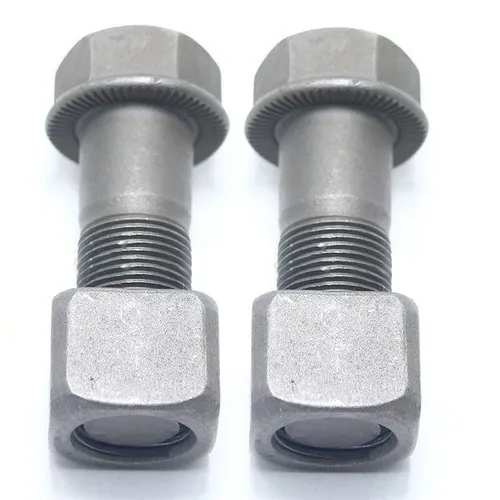Track Bolt
Track Bolt

Bolt Standards:
Track bolts are not defined by a specific standard, but are a specialized type of bolt used in railway and track applications.
Material and Properties:
Carbon steel
Plain carbon steel (e.g. C10, C15, C22)
Provides good strength and hardness
Alloy steel
Higher strength and hardness (e.g. 34CrMo4, 40CrMnMoS8-6)
Bolt Head and Shank Design:
Hexagonal or square bolt head
Threaded shank with a smooth, unthreaded section
May have serrations or other features to prevent rotation
Applications:
Fastening railway tracks to sleepers or ties
Securing rail joints and fishplates
Heavy-duty industrial and construction applications
Coatings and Finishes:
Plain (uncoated)
Zinc plated (for mild corrosion resistance)
Hot-dip galvanized (for better corrosion resistance)
The key features of track bolts are their specialized design for use in railway and heavy-duty industrial applications. The hexagonal or square bolt head, along with the smooth, unthreaded section of the shank, allow the bolt to be securely tightened and prevent rotation in the application.
Track bolts are typically made from carbon or alloy steel to provide the necessary strength and durability for the heavy loads and demanding environments they are subjected to in railway and industrial settings. Coatings like zinc plating or hot-dip galvanization can provide additional protection against corrosion in these environments.
The selection of the appropriate track bolt material and design features, such as the head shape and shank length, will depend on the specific application and requirements of the railway or industrial system where they are used.





